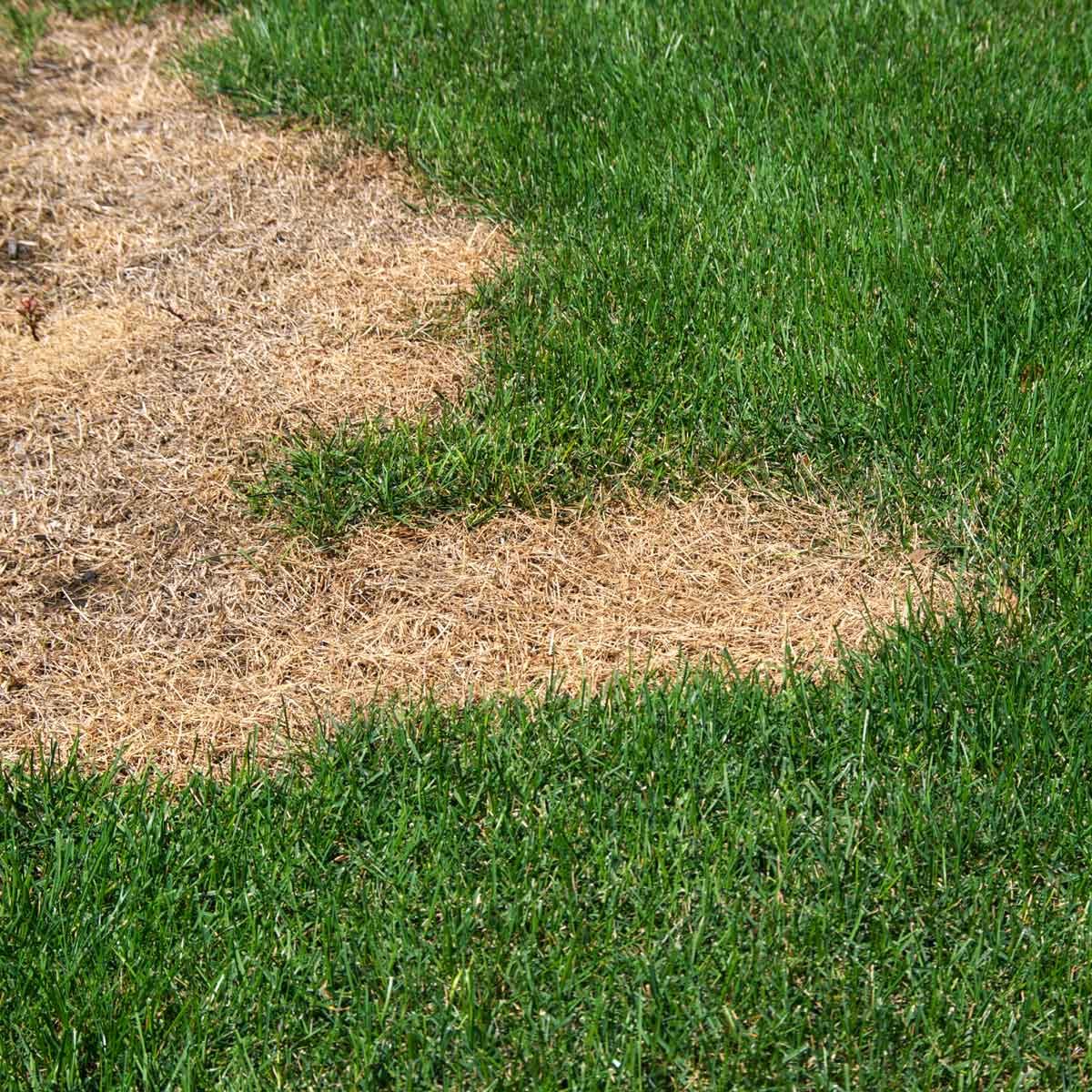Dry grass can test the patience of any homeowner. Identifying the cause and following these simple steps can make dead grass disappear.

How Do I Repair Dry Grass?

Dealing with patches of dry grass in your lawn can be a real challenge. They seem to mysteriously show up without warning and quickly wear out their welcome. Determining the reasons why those patches of dead grass are there in the first place will help you figure out a game plan to fix them once and for all.
On This Page
What Is Dry Grass?
Dry grass is unhealthy or dead grass. It’s the result of an underlying problem that needs to be corrected before you can restore the area to its original healthy condition.
What Does Dry Grass Look Like?
Dry grass can take on different looks. The color, shape and size of dry grass areas can vary. Changes in color, shape or size are clues that can help you to identify the cause. Where it shows up in your lawn can be a clue, too. Usually the dry grass areas are straw-colored and may have weeds growing in them.
Why Does Dry Grass Occur?
Here are some common causes for dry grass patches:
- Dog urine;
- Lawn disease;
- Fertilizer or pesticide spills;
- Soil compaction;
- Grub and insect activity;
- Localized dry spots;
- Unwanted subsurface materials and contamination.
How Do I Fix Them?
These seven easy steps will help you restore your lawn to its original condition:
- Remove dead material to expose the soil underneath it.
- Loosen the soil with a rake or hand tool.
- Flush damage from dogs and spills with water to move the contaminants through the soil.
- If necessary, add topsoil to bring the area back up to grade.
- Sprinkle seed and lightly scratch it into the soil. Top-dress the area with a light coating of additional soil. Gently tamp.
- Add starter fertilizer and seed starter mulch.
- Lightly water and follow with frequent light waterings as the seedlings mature.
Whatever the reason for your dry grass, follow these steps to restore your lawn. But before fixing these trouble areas, it’s important to know why they occurred. You wouldn’t replace wet carpet without fixing the hole in the roof. The same logic holds true here. Remember, dry grass is only a symptom of the underlying problem that created it. You’ll want to correct those problems first. Otherwise, the same dry grass will return.




















